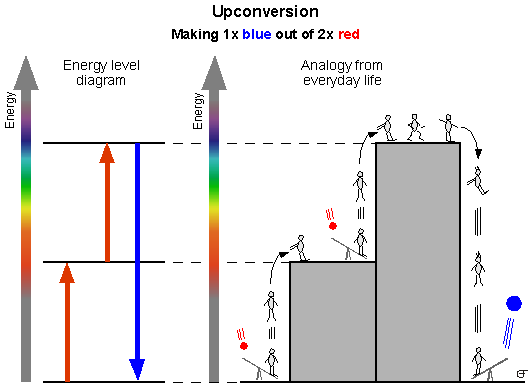|
|
Photoexcitation
at a certain wavelength in the NIR followed by luminescence at a
shorter wavelength in the VIS is called NIR
to VIS photon upconversion.
This is a rather unusual process since low energy photons are
"converted" to higher energy photons. At least two NIR
photons are required to generate one VIS photon.
Upconversion can only occur in materials in which multiphonon
relaxation processes are not predominant, thus allowing more
than one metastable excited state. In rare-earth compounds,
the 4f or 5f electrons are efficiently shielded and thus not
strongly involved in the metal-to-ligand bonding. As a
consequence, electron-phonon coupling to f-f transitions
is reduced, and multiphonon relaxation processes are less
competitive. The phenomenon of upconversion is therefore most
common and best studied in materials containing lanthanide ions.
But there are also transition-metal
systems and rare-earth / transition-metal combinations which
show this phenomenon.
Idea
for picture: Ralph Schenker
Text adapted from: Hans. U. Güdel, New Light-Emitting Inorganic
Materials, Chimia 52, 561-565 (1998)
